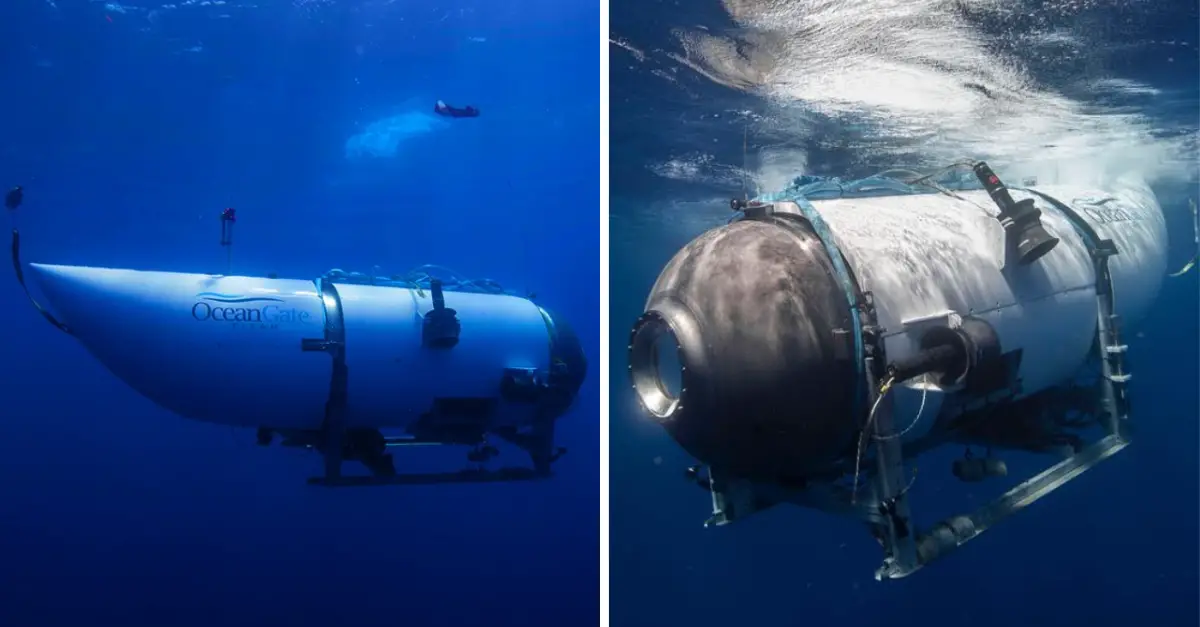The search for the missing Titanic submersible has reached a critical point, with the sub set to run out of breathable oxygen in just a matter of hours at the time of writing.
However, one expert says that the sound signals detected in the search area suggest that the vessel is at or near the surface.
The sub, named Titan, was carrying 5 people down to the bottom of the ocean to see the Titanic’s shipwreck in real life, which is located 3,800m below sea level, and is 370 miles off the coast of Newfoundland. The trip is thought to have cost £195,000 per head.
It vanished on Sunday morning after losing contact with its mothership MV Polar Prince roughly 1 hour and 45 minutes into the vessel’s 2 hour descent.
On board the sub is Stockton Rush, the CEO of OceanGate Expeditions, the company who own the vessel and conduct the tourist trips. Alongside him is the British billionaire Hamish Harding, British-based Pakistani millionaire Shahzada Dawood and his 19-year-old son Sulaiman. The fifth person on board is Paul-Henry Nargeolet, a French submersible pilot who is considered one of the world’s leading experts on the Titanic.
Since the underwater vessel lost contact on Sunday, the search effort has hugely ramped up after authorities estimated that there are only a few hours of breathable air left.
As of Tuesday afternoon, a combination of US and Canadian forces and private vessels had searched a 7,600 square mile area, equating to the size of the US state of Connecticut.
However, an update yesterday gave authorities more hope, as the Canadian P-3 aircraft have detected “underwater noises in the search area.”
“As a result, ROV (remotely operated vehicle) operations were relocated in an attempt to explore the origin of the noises. Those ROV searches have yielded negative results but continue,” the coast guard tweeted.
It has additionally been reported that a second aircraft, a P-8, with underwater detection abilities detected “banging sounds.”
Chris Brown, a friend of Harding, said the reports of banging has “got them written all over it,” and that it was “just the sort of thing I would have expected Hamish to come up with.”
“If you made a continuous noise, that’s not going to get picked up, but doing it every 30 minutes, that suggests humans,” he said, per BBC News.
“I’m sure they’re all conserving oxygen and energy, because it’s cold and dark down there.”
Two of the people on board are members of the scientific society Explorers Club, who have shared a hopeful message in the wake of the news.
“There is cause for hope, that based on data from the field, we understand that likely signs of life have been detected at the site,” the president of the organisation shared.
Frank Owen, a submarine search and rescue expert, spoke out about the reports of banging, and said that his “confidence went up by an order of magnitude” after learning of the situation, as it indicates that the sub may be at or near surface level.
“Firstly, on board this craft is a retired French navy diver. He would know the protocol for trying to alert searching forces… on the hour and the half hour you bang like hell for three minutes,” he told the BBC.
“Below about 180 metres, the water temperature drops very rapidly.
“That creates a layer that the [sonar signal] bounces off. But if you’re in the same depth water it tends to go quite straight.”

